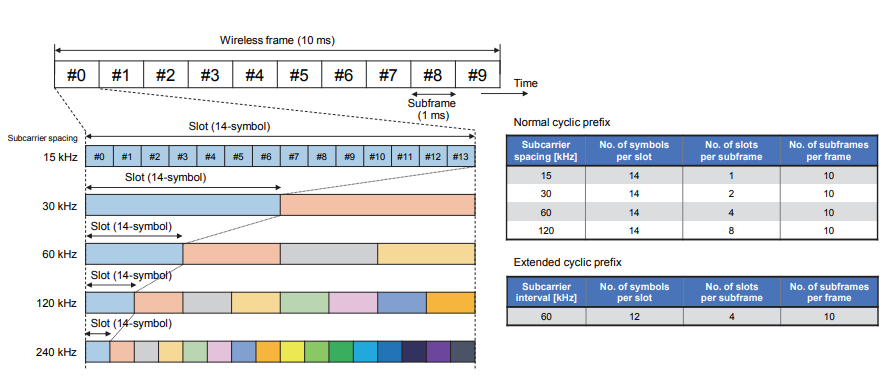5G NR modulation and waveforms have some commonalities with LTE but aim to have much higher spectral efficiency. NR supports QPSK, 16 QAM, and 256 QAM with the same constellation mapping as LTE. An OFDM-based waveform is supported.
Some parts of the numerology are flexible, like the SCS, while others are fixed. The subframe duration is fixed to 1 ms and the frame length is 10 ms. Given subcarrier spacing of 15 kHz* 2n, each symbol length, including the CP, of 15 kHz equals the sum of the corresponding 2n symbols of the SCS.

Some notes:
- A slot still consists of 14 OFDMA symbols for the given subcarrier.
- In only the Frequency domain, A RB (Resource Block) consists of 12 consecutive subcarriers for the given subcarrier, which means one dimension (Freq. Domain only unlike LTE).
- In 5G NR, unlike LTE, the frame structure is not dependent on the duplex mode as it uses a common frame structure regardless of the duplex mode.
- Not all SCS options are being proposed for all frequencies. For sub 6 GHz, only 15 kHz, 30 kHz, and 60 kHz are to be used. Above 6 GHz, there is no decision yet. The candidate SCSs are 60 kHz, 120 kHz, and 240 kHz with 480 kHz marked for future study.
- 5G also provides greater flexibility than LTE in the UL and DL patterns of TDD communication as it can be semi-static or dynamic.
